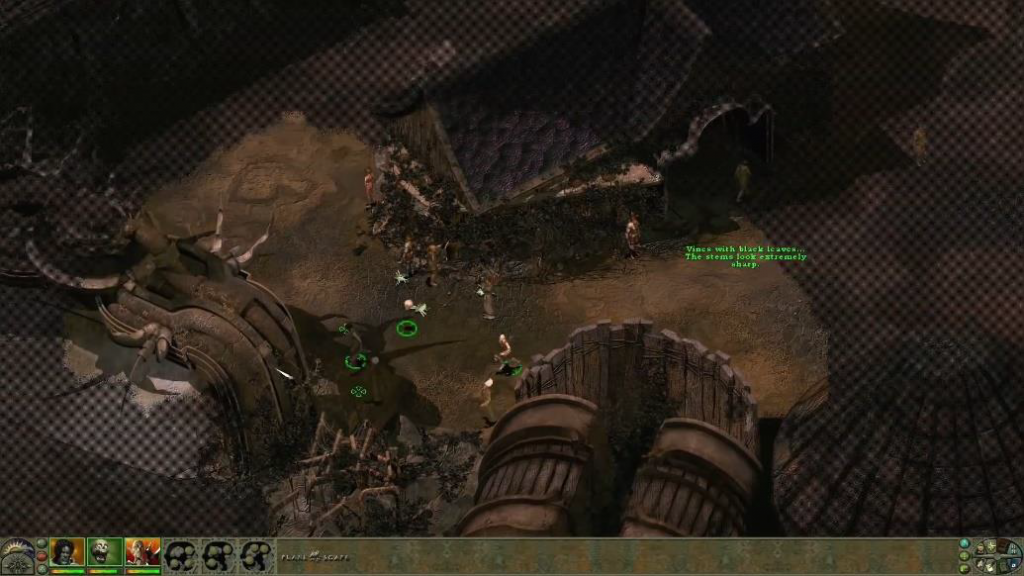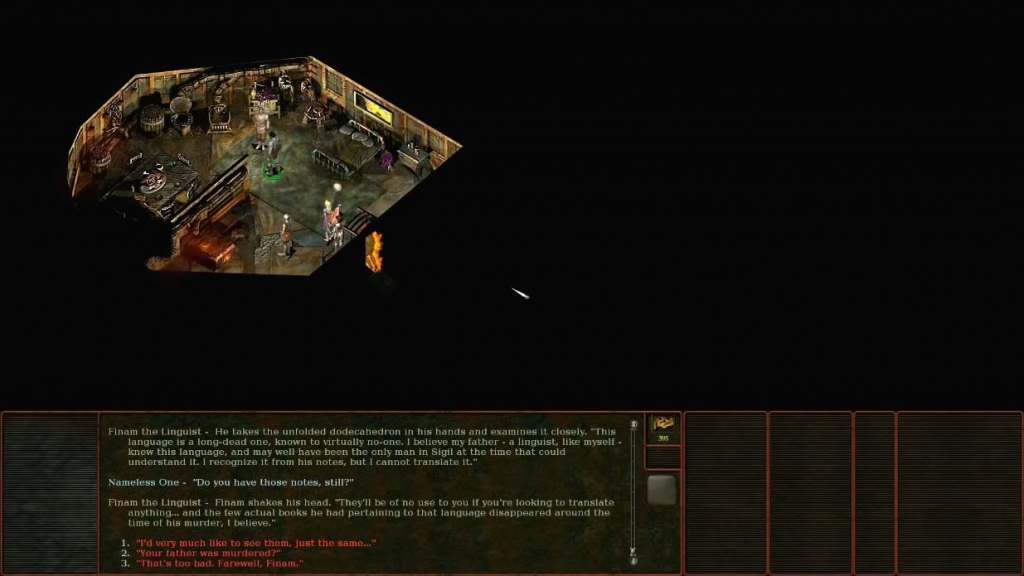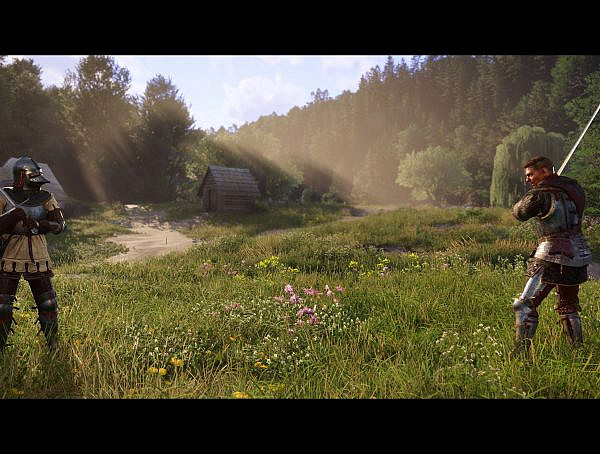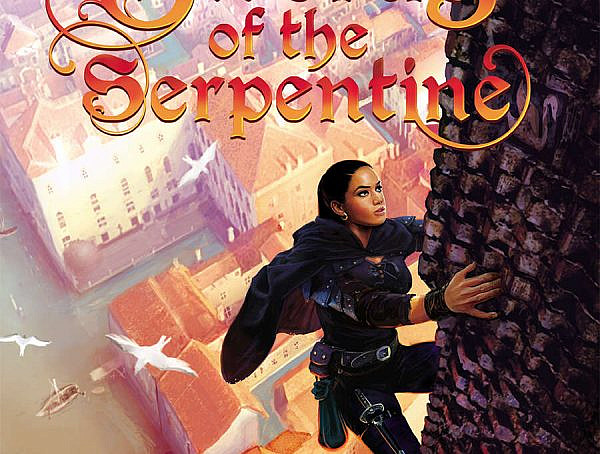Esoteric journey to the center of the multiverse
When someone utters the words “Dungeons & Dragons license game”, it’ll likely conjure up images of castles, dungeons, elves and medieval villages in the mind of the average gamer. Most D&D based video games do indeed tread a well-worn path when it comes to the setting, after all the game itself played a huge role in creating the template for the quintessential fantasy aesthetic. There are some games that break that mold however, such as the criminally underrated Dark Sun: Shattered Lands (1993) as well as the cult classic Planescape: Torment (1999). The latter in particular takes place in such an imaginative world that it works as a stark reminder of how utterly mundane and derivative the bulk of fantasy fiction actually is.
The game mostly takes place in Sigil, a byzantine city at the center of the D&D multiverse that’s connected to all other planes of existence through innumerable portals masquerading as everyday objects. In it, you play as ‘The Nameless One’, an immortal amnesiac who loses his memory upon dying. At the start of the game, he wakes up from a mortuary with his memory lost and skin filled with scars and tattoos that urge him to go find a man named Pharod. By following the breadcrumb trail of clues left behind by his past incarnations, The Nameless One embarks on a quest to learn about his past.
The story features existential themes and centers around the question: “What can change the nature of a man?”. It’s often lauded as one of the most well-written video games of all time, and for a reason. Because the story isn’t a trite tale about some “chosen one” saving the entire world from some big bad entity that you don’t get to meet until the end of the game, it’s a lot more interesting and personal. The voyage into The Nameless One’s past is a fascinating one, and it resonates on an emotional level. Characters you meet are multi-faceted and relatable despite the fact that they inhabit a bizarre high fantasy world, thanks to writing that’s eloquent and pays attention to little details. The low lives of Sigil talk in an exotic dialect that reflects their rough upbringing whilst you can have mentally stimulating conversations with those hailing from the upper echelons of Sigil society.
While the actual in-game character models are rather nondescript due to the isometric camera angle and graphical limitations of the time, the writers spared no adjective in fleshing out character descriptions to immerse the player in the situation. Planescape: Torment is undeniably and exceedingly wordy, but it’s not verbose for the sake of it, the player is rarely force-fed unskippable story segments or vapid info dumps.
The spellbinding story behind The Nameless One’s past is just one amongst many others in the fascinating fantasy world the game takes place in. The game world is incredibly unique and full of exotic creatures, competing ideologies and manifestations of different metaphysical concepts, so it’s just a joy to explore it and talk to every one you come across. The writers even managed to turn the act of listening to a virtual lecture more entertaining than many extravagant set piece moments in AAA games!
The descriptive writing is coupled with great sound design to really immerse the player in the environment. As you stumble outside of the mortuary to the dingy and unwelcoming slums of The Hive, you are greeted by thugs, prostitutes, insane homeless people and cultists. The ambient soundscape is filled with the noises of loud drunks, aggressive merchants and general commotion, and it does a stellar job in bringing to life the inhospitality of that environment. The pre-rendered background art is also vivid and has stood the test of time well, so the presentation does a good job of engrossing the player in a magical atmosphere.
Much like the protagonist himself, at first the game comes off as menacing and macabre, but that visceral shock turns into a very cerebral and rewarding experience as you dig below the surface and start uncovering the philosophical undertones of the story. And unlike in many pretentious indie titles that are praised for their writing, there’s a solid mechanical foundation in this game as well. While the combat system is divisive and it isn’t complemented by good encounter design, it still offers a decent amount of tactical depth. Inventive features such as the shifting alignment system help to further elevate this game to the status of a classic. Thanks to the alignment system and amnesia trope, ethical roleplaying is well implemented. As the The Nameless One has lived countless lives as different personalities and has no recollection of anything, it makes sense that you wonder around asking questions about everything, and your ability to decide his mortal stances and worldview doesn’t clash with his established backstory.
Planescape: Torment not only transcends the D&D license, but the entire RPG genre itself.
Author’s note: Screenshots taken using a widescreen patch, the game isn’t supposed to look like that.
Title: Planescape: Torment
Developer: Black Isle Studios
Publisher: Interplay Entertainment
Platform: PC
Release: December 12, 1999
PEGI Rating: 16
You might also like
More from Features
Game Awards – Celebration of talent or a Marketing Extravaganza?
The Game Awards 2024 is over and the winners are announced. However, are they still following the same pattern that …
Worlds in a Finnish Theater: League Finals, Community, and Döner Kebab
I travelled to Helsinki to watch League finals in a cinema, and it was worth it. #leagueoflegends #esports #community #worldfinals

















